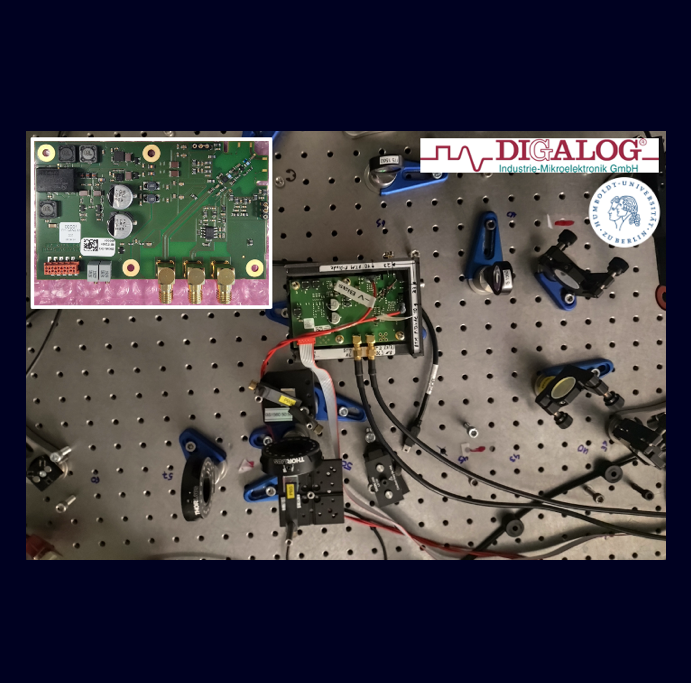BaPhoMoQ - Balanced Photoreceiver Modul for Photonic Quantum Computing
Short description: Development of a configurable, specially adapted, low-noise balanced photoreceiver module for quantum optics applications.
Motivation
Homodyne photo detection is a technique to fully characterize complex quantum states of light. It relies on balanced detection of extremely small differences in photoreceiver currents and demands ultra-high noise suppression. Humboldt-Universität and DIGALOG Industrie-Mikroelektronik GmbH are working together on the development of a reconfigurable low-noise balanced photoreceiver, designed to reveal non-classical properties of weak light fields across a wide spectral range.
Implementation & Objectives
We are developing electronic modules compatible with a range of commercial photoreceivers. The targeted key performance benchmarks include constant performance over a broad electronic bandwidth (100 MHz), strong common-mode rejection and a high signal to noise ratio. Such characteristics ensure compatibility with a wide variety of experimental configurations. The integration of a microprocessor and a dedicated software will further enable real-time performance monitoring and system diagnosis.
Perspectives
The detection system will contribute to research and development targeting the Quantum 2.0 industry, finding applications in continuous-variables quantum optics, such as state tomography, quantum teleportation, entanglement distribution, and secure communication. Currently, the electronic modules are being integrated into ongoing experiments on complex quantum state engineering.
Project onsortium:
Oliver Benson1,*, Roger Alfredo Kögler1, Hardi Engel2 and Martin Weber2
1 Humboldt-Universität zu Berlin, Institut für Physik, Newtonstraße 15, 12489 Berlin
2 DIGALOG Industrie-Mikroelektronik GmbH, Justus-von-Liebig-Straße 7, 12489 Berlin
* project coordinator
Contact: Prof. Dr. Oliver Benson
Duration: 04/2024 – 03/2027

